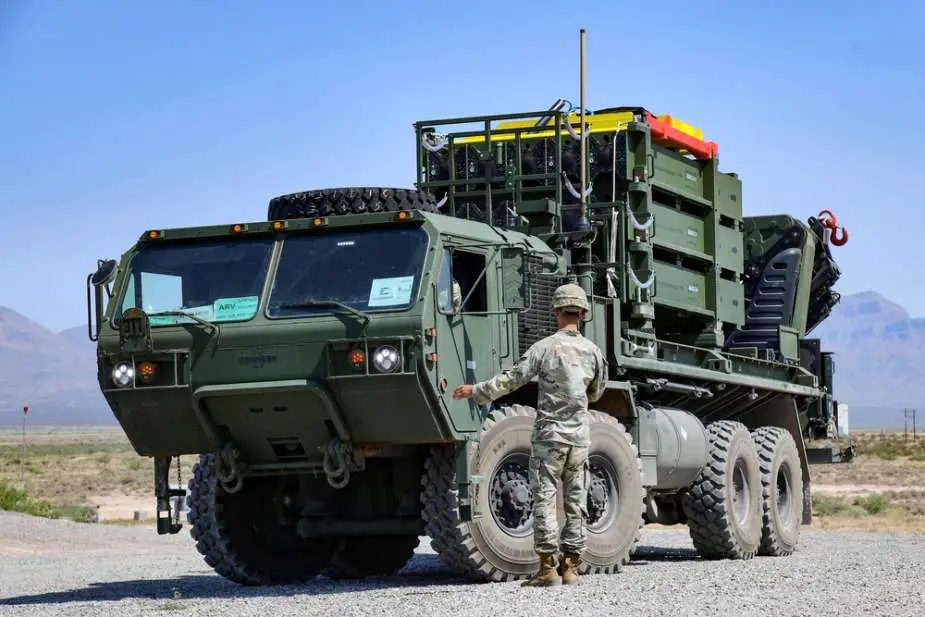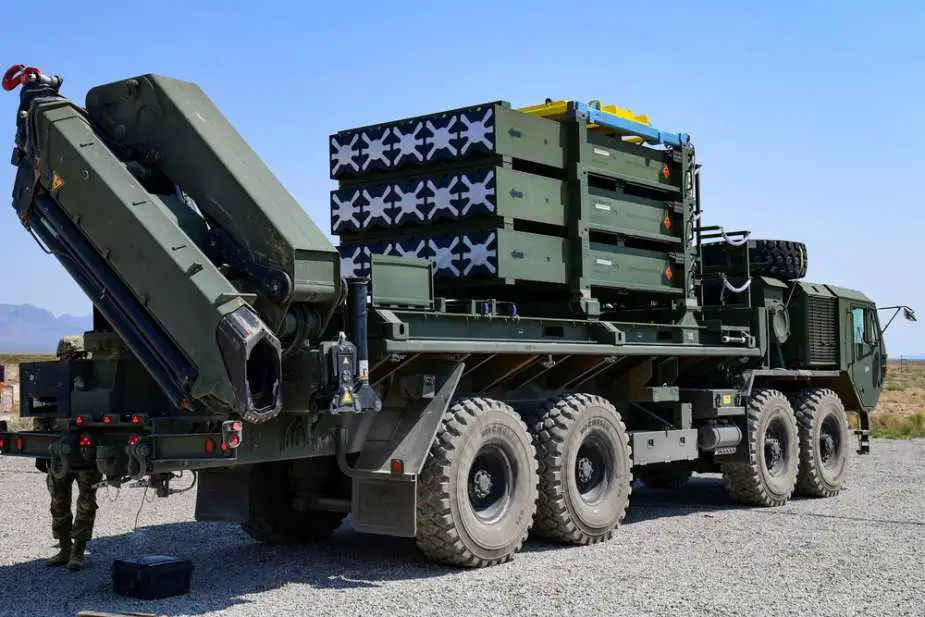Breaking news
US Marine Corps to acquire 3 Iron Dome batteries with 1840 Tamir missiles.
According to an article by The Drive on August 25, 2023, the US Marine Corps (USMC) announced its plans to acquire three sets of Iron Dome systems, which will consist of 44 launchers and a total of 1,840 Tamir interceptors. While the exact financial details are not disclosed, initial estimates suggest that the cost for the Tamir interceptors alone could reach around $200 million. This announcement was made through an official notice outlining potential agreements with Raytheon.
Follow Army Recognition on Google News at this link

US Marine Corps to acquire 3 Iron Dome batteries with 1840 Tamir missiles (Picture source: US DoD)
The objective of the notice is to secure contracts for the acquisition, integration, testing, and subsequent deployment of Medium Range Intercept Capability (MRIC) systems. The MRIC is a collaborative effort initiated in 2020 between Rafael Advanced Defense Systems and Raytheon to develop a customized Iron Dome system meeting the specific requirements of the US Marine Corps.
The initial phase involves the supply of up to 80 Tamir missiles to support the MRIC Prototype deployment, followed by the procurement of three MRIC batteries. These batteries consist of 1,840 Tamir missiles, 44 Expeditionary launchers integrated with Iron Dome Missile Firing Unit Launch Control Electronics (LCE), and 11 mini-Battle Management and Control (mBMC) systems.
This decision reflects the effectiveness of Rafael Advanced Defense Systems's Iron Dome system in intercepting and neutralizing incoming threats, with an estimated success rate of around 90%. This places it among the most effective air defense systems worldwide. Additionally, it indicates its cost efficiency, as reported unit costs for Tamir missiles may vary, but they are generally understood to range from $40,000 to $100,000. This cost-effectiveness is notable when compared to many other surface-to-air missiles, including those designed to be budget-friendly.
Currently, the Marine Corps possesses a prototype MRIC system with expeditionary Command and Control capabilities, incorporating the PDS from the CAC2S, and four MRIC Expeditionary Launchers (MEL), each capable of accommodating up to 20 Tamir interceptors at once. These interceptors are preloaded in individual canisters for efficient deployment.
The MRIC system includes various components, such as an expeditionary Command and Control module with processing and display subsystems (PDS) for threat management, MRIC Expeditionary Launchers (MEL) for deploying interceptor missiles like the Tamir missiles, and Mini-Battle Management and Control (mBMC) Systems for operational coordination. The program also provides logistics and technical support to ensure the functionality and maintenance of the system.
The Medium Range Intercept Capability (MRIC) program within the US Marine Corps aims to enhance its air defense capabilities against diverse airborne threats, including cruise missiles, Unmanned Aircraft Systems (UAS), and other identified risks. The program seeks to establish an integrated air defense system that collaborates with existing surveillance radar and communication assets within the designated area of operations. This system is designed to complement other theater air and missile defense systems.
According to a report by the Army Recognition editorial team on August 1, 2023, discussions have taken place within the US Marine Corps regarding the potential establishment of a production facility in the United States for the Iron Dome's Tamir interceptor and its Americanized version, SkyHunter.
The idea of domestically producing the Tamir interceptor in the US was initially proposed by Raytheon and Rafael about three years ago. However, the official selection of a production site had not been finalized until this recent development. Camden, Arkansas, emerged as a potential candidate due to the presence of an existing Raytheon facility and other defense contracting establishments like Lockheed Martin, which produces the M142 HIMARS.

US Marine Corps to acquire 3 Iron Dome batteries with 1840 Tamir missiles (Picture source: US DoD)
Don Kelley, the Program Executive Officer Land Systems Ground-Based Air Defense program manager for the Marine Corps, emphasized that establishing a US production facility could have significant implications for the Medium Range Intercept Capability (MRIC) program and the broader operations of the US Marine Corps. Additionally, the Israeli Missile Defense Organization might consider the US site as an alternative source for Tamir missiles.
Despite the potential advantages, the reasons for the delay in announcing the Tamir-SkyHunter US production site have not been disclosed. Some industry sources suggest that, in the meantime, the US might continue relying on missiles produced in Israel.
As of May 16, 2023, the United States has procured two Iron Dome batteries. The procurement process began in November 2011, with an initial deal valued at $100 million and the potential for the cost to rise significantly over time. In January 2019, it was reported that the United States would acquire two Iron Dome batteries for $373 million. This purchase included two command posts and radars, 12 launchers, and 480 missiles. The first battery was delivered on September 30, 2020.
The Iron Dome system, developed by Israel's Rafael Advanced Defense Systems in collaboration with the Israeli Defense Forces (IDF), is an advanced air defense system designed to intercept and destroy short-range rockets and artillery shells launched from distances of up to 70 kilometers.
The Iron Dome system consists of several components, including a radar system, a battle management and control unit, and a missile firing unit. The radar system detects incoming threats and tracks their trajectory, while the battle management and control unit determine the appropriate response and calculate the optimal intercept point. Each battery can defend an area of nearly 60 square miles.
When a threat is detected, the Iron Dome system launches a missile to intercept it. The missile is equipped with a highly advanced guidance system that can adjust its trajectory in real time for a successful interception. It detonates in the proximity of the incoming threat to maximize its destructive impact rather than making direct contact with it. In essence, Iron Dome's Tamir missile effectively neutralizes incoming threats launched from distances of 4 to 70 km. The Tamir missiles employ electro-optical sensors, steering fins, and proximity fuze blast warheads. Most Tamir missile components are sourced through the Raytheon Missiles & Defense supply chain in the United States.
One notable feature of the Iron Dome system is its ability to differentiate between genuine threats and false alarms. This is achieved through "sensor fusion," where data from multiple sensors is combined to create a more accurate depiction of the incoming threat. This helps minimize false alarms and reduces the overall cost of the system.
Since its deployment in 2011, the Iron Dome system has demonstrated high effectiveness in intercepting and destroying incoming threats. As per the Israeli Ministry of Defense, the system boasts an approximate success rate of 90%, establishing it as one of the most efficient air defense systems worldwide.


























